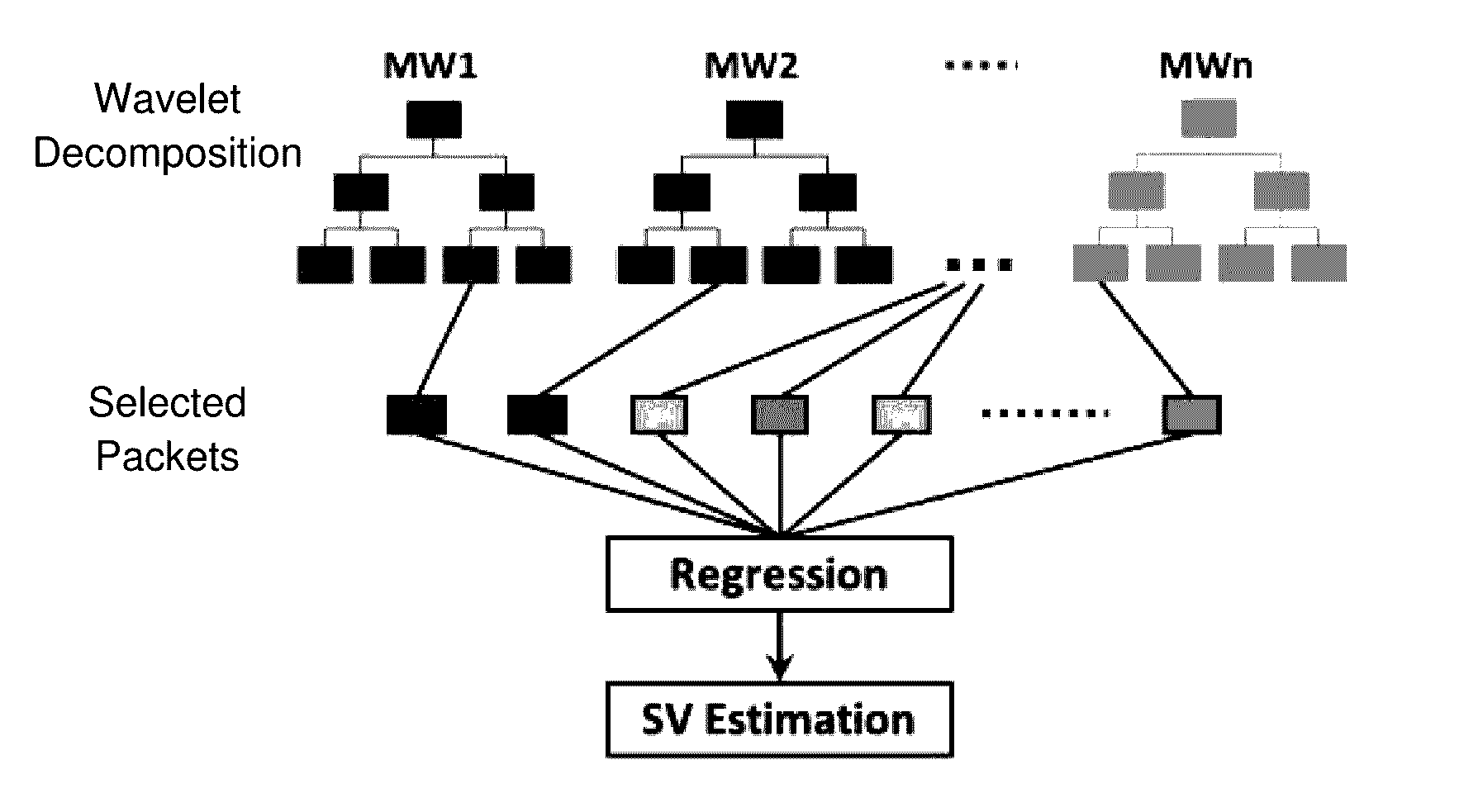System and method for infrasonic cardiac monitoring
a cardiac monitoring and infrasonic technology, applied in the field of infrasonic cardiac monitoring system and method, can solve the problems of difficult measurement, lack of accuracy, and drastic limitation of its us
- Summary
- Abstract
- Description
- Claims
- Application Information
AI Technical Summary
Benefits of technology
Problems solved by technology
Method used
Image
Examples
example 1
[0128]Pilot studies were conducted using a standard MEMS accelerometer (Kistler Model 8312A). Different recording locations on the chest wall were investigated as well as the required filtering and equipment necessary to accurately and reproducibly extract CO measurements. Various analog filters, digital filters, and basic mathematical analysis approaches for removing noise and recording artifacts from the acceleration signal were also investigated. These initial studies relied on integrating the acceleration signal to obtain a displacement signal from which SV was determined. Polynomial curve fit baseline subtraction was the initial approach used to remove slow trends associated with integration and breathing. Wavelet analysis was used to remove noise from the recorded signal. First and second correlation to a NICOM Bio-impedance device showed good CO correlation.
[0129]The first recordings were undertaken in order to test the possibility of capturing a reproducible signal...
example 2
[0150]In the next stage of testing, a new, lower noise, and more sensitive, accelerometer was used to record the acceleration signal. The accelerometer 1221 from Silicon Design was used which provided greater sensitivity (2000 mV / g) and lower noise (5 μg / Hz1 / 2). The displacement signal, correspondingly, was observed to have a slightly different pattern than the previous recorded signal. In addition, wavelet analysis techniques were employed to remove the high and low frequencies components of the chest acceleration signal, and provide better artifact removal. The new transducer included amplification along with low pass and high pass filters. The high pass filter was set at 8 Hz and the low pass filter at 370 Hz. The recordings were performed similarly to the previous recordings. The displacement signal is slightly different, since the low frequency components below 8 Hz, which were captured in the previous recordings, have relatively large amplitudes. These low frequency components...
example 3
Genetic Algorithm Optimization of Wavelet Packet Set
[0177]In the past, wavelet transform and GAs where combined yield results for the problem set they were used. In this case, non-traditional wavelet computation is employed, where just decomposition is performed and a GA is used to define a specific packet set which correlated best to the ground truth. An initial method did not work and further investigation was done to modify the algorithm to identify a desirable solution. A series of experiments was used to test the algorithm, and after restricting the correlation value R2, the algorithm was able to converge. The final algorithm was used to identify specific features that correlate best to NICOM SV giving four subjects data.
[0178]In this application, a subcomponent of chest wall motion (seismocardiogram recording) is sought to be discovered which can be used to estimate a specific activity of the cardiac muscle, for example, stroke volume. The time consuming operation of waveform ...
PUM
 Login to View More
Login to View More Abstract
Description
Claims
Application Information
 Login to View More
Login to View More - R&D
- Intellectual Property
- Life Sciences
- Materials
- Tech Scout
- Unparalleled Data Quality
- Higher Quality Content
- 60% Fewer Hallucinations
Browse by: Latest US Patents, China's latest patents, Technical Efficacy Thesaurus, Application Domain, Technology Topic, Popular Technical Reports.
© 2025 PatSnap. All rights reserved.Legal|Privacy policy|Modern Slavery Act Transparency Statement|Sitemap|About US| Contact US: help@patsnap.com



